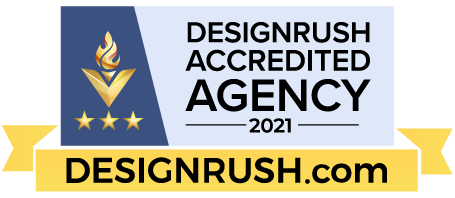As an experienced web design and development agency, a reasonable proportion of our work comes from website design tenders and requests for proposal (RFPs).
Tendering can be a frustrating and time-consuming process for both parties, so this document is designed as a self-help guide for suppliers on “how to write a website development tender” to help reduce frustration on behalf of the web design agencies applying, and – hopefully – increase the quality of your responses as a tendering organizzation.
A suggested outline for your web development tender document
So, to start, here is a list of generic, high level headings you may want to use for your website design’s tender document.
- Introduction:
a brief overview of your organisation, an outline of the project below, and your hopes and aspirations for the new website;
- Introduction:
- Scope and specification of the project:
outline what you expect, and the components that you need to be provided by the chosen supplier. This is a good point to tell the supplier what you think works on your current website (if you have one), and what doesn’t;
- Scope and specification of the project:
- Budget:
at the very least, give an indication of the cost bracket you are expecting for the project, to give potential suppliers an idea of whether they can undertake the project within your proposed budget;
- Budget:
- Case studies:
ask for written case studies of similar projects from the past. This negates the need to ask your suppliers for a design for your project (see below), whilst giving you the opportunity to see that they’re capable of delivering your project;
- Case studies:
- Tender criteria:
a list of the specific areas of the tender you will be awarded on, including a breakdown of how much weight each of these areas attracts. It can also be useful to include a brief road map of your project, including;
- The time and date of the tender deadline (and your timezone, if you’re expecting international submissions) for submission of completed tender documents;
- Your estimated date for the awarding of the contract to the winning supplier;
- Your project deadline: if possible, give some information on why the deadline set as this date (e.g., the website needs to be ready for a product launch or trade show);
- Key contacts:
details – including contact details – of the key members of your organisation responsible for dealing with the tender; specifically, list those able to answer any queries about your tender;
- Appendices:
additional background information or secondary information relating to the project. Optional;
This is by no means a solid outline for your project, and by all means, customize it and expand it in areas you feel are beneficial to your project.
1. Please don’t ask for designs in your tender
One very common request we see in tenders is for a design for your new website. By all means, ask for a portfolio of our design work, but please don’t expect the supplying web design agency to provide a full design for your project before you have awarded the project: it’s equivalent to asking a builder to build you a brand new house for free before you decide whether or not you want the house! There are other – and possibly better – reasons for this, too.
The foremost of these is that this ‘free’ design is a poor criterion of the tender upon which to decide your supplier, as the supplier has not had the chance to talk to you about the websitein full, so the resulting website is unlikely to reflect what you were after. As part of your project, you are paying the final supplier to undertake this process for you, so be patient!
Secondly, this is a bad idea as:
You’re likely to lose interest from smaller providers who are equally capable of providing the website your organisation wants (and possibly at a smaller cost), because providing great website design massively increases the time commitment from the web design agency to submit a response to your tender.
Additionally, this cost is passed to you if you chose a supplier who does this. For example, if they win 1 in 5 tenders which ask for speculative design as part of the submission and you pick one of these suppliers, the chances are that you are paying for 4 failed designs as well as the one in your tender! Here is some further reading from sources I respect: Andy Budd: ‘my response to speculative design’, ‘Why spec work is bad for the client and the designer‘ by Con Kennedy;
- For the reasons above, professional designers will resent you asking, and may simply ignore your tender entirely, which means the quality of your potential suppliers is likely to be limited;
I understand why you want to ask for designs – choosing a supplier without seeing a potential design can seem daunting, especially if you’re committing a large amount of money to the project. As a remedy, take the time to look through the design portfolios of those companies tendering and ask for case studies of any similar projects they have completed, but keep in your mind that your project could be hugely different from what is on show.
2. Provide a budget
No; really: providing a budget can help entice more established and experienced companies in to submitting a tender for your web design project. Writing a tender is often a time-consuming task for web design companies, and without a budget, there is little incentive to submit a tender for your project!
Providing a budget for your web design tender document is important, as it creates a relationship of trust between you and your potential suppliers. By not disclosing your budget, you’re saying “we don’t trust you, but we want to work with you”! By providing a budget range, you’re showing that you are serious about the project and have the resources available to fund it to a high quality.
Disclosing your project budget is also a good idea as it gives suppliers a choice. In a recent tender we submitted, the tendering organization had a smaller budget than we would usually work with, but as it was a charitable organization who were doing work we supported, we chose to submit a tender and offer a pro bono aspect to the tender to make up the deficit in project budget.
From a client point of view, once again I can see the logic for hiding your budget to prevent suppliers simply inflating costs to fill your available budget. In this case, providing boundary figures can help an agency discover if you have the range of budget they would need to complete the project to their highest ability: so, giving $17000 – $22000 as a project boundary values is of more use to me as a supplying web design agency than giving no figure, and it means I am more inclined to submit a tender for the project, knowing that a sensible budget is in place.
Finally, be clear about whether your budget includes the requirement for hosting and maintenance or support (and if it does, for how many months/years you will need website maintenance for).
3. Consider whether you really need 24/7 support
Another recurrent theme in Invitation To Tender (ITT) documents I see is the demand for 24/7 support. In many situations, this may well be desirable, but you need to ask yourself if it is cost-effective for you to demand this?
By default, we offer support by email and telephone to existing clients between 10 am and 6 pm on business days, excluding national holidays, war or natural disasters, and I imagine many other web design agencies act similarly. We also offer an out-of-hours support line if it is really required, but this attracts a fairly substantial charge per call (or very high monthly support premiums) as we need to sleep at some point!
Again, this is understandable from the client’s point of view; nothing seems to shake a client more than your website being offline. As a someone who runs a web design agency, though, there is one major reason we don’t offer this in its full implementation – i.e., with someone in the office awaiting support calls 24 hours a day, 365 days a year – it would triple our costs, and with little benefit to you as a client, who may call only once a year.
4. Be open to suggestions
Another common theme amongst some tender documents I receive is restricting the project to a particular programming language (such as PHP or ASP.NET) or content management system (such as Drupal).
Whilst there may well be some solid reasoning behind these decisions, it can be worth being open to suggestions, with the resulting website that is built for you is much more suited to a technology you hadn’t previously considered a viable option.
It could also be worth considering joint submissions if your project includes components likely to need different skill sets, such as website design and online marketing: you may find you get better results from your project by allowing, even if it does increase your paperwork.
And, if you are insisting on using a particular technology, programming language or content management system, justify the decision in your briefing document!
5. Make it easy to contact you to ask questions
Even the ‘perfect’ brief document is likely to generate questions from suppliers, particularly if you are vague about how you want certain features to function. As such, it is vital that you provide clear contact information for a key member of your organization’s team involved in the tender capable of providing sensible answers in a timely manner!
There are, of course, questions that you may not be able to answer in order to avoid giving an unfair competitive advantage to a supplier. Many tendering companies simply circulate all questions and answers to all companies who have expressed an interest in the project to overcome this.
Simply, by allowing suppliers to ask questions, you are helping yourself as you should receive a higher standard of tender submissions who better understand what your project entails.
6. Contact all suppliers after you have awarded the project
Once you have chosen your preferred supplier, please take the time to respond to all of the potential web design agencies who have taken the time to submit their proposals; there is nothing more annoying than spending hours – or days – on writing a tender and submitting it on time than to not get a response, even if it’s a “thank you but we’ve chosen someone else this time”!
It’s also nice – although not necessary if you have a very high number of tenders submitted – to provide a little bit of feedback on why the tenderer was not awarded the project.
If you would like to work with us on your next website design project, please do contact us; we’re more than happy to receive requests for proposals and invitations to tender.
(This post originally appeared on PeacockCarter)




